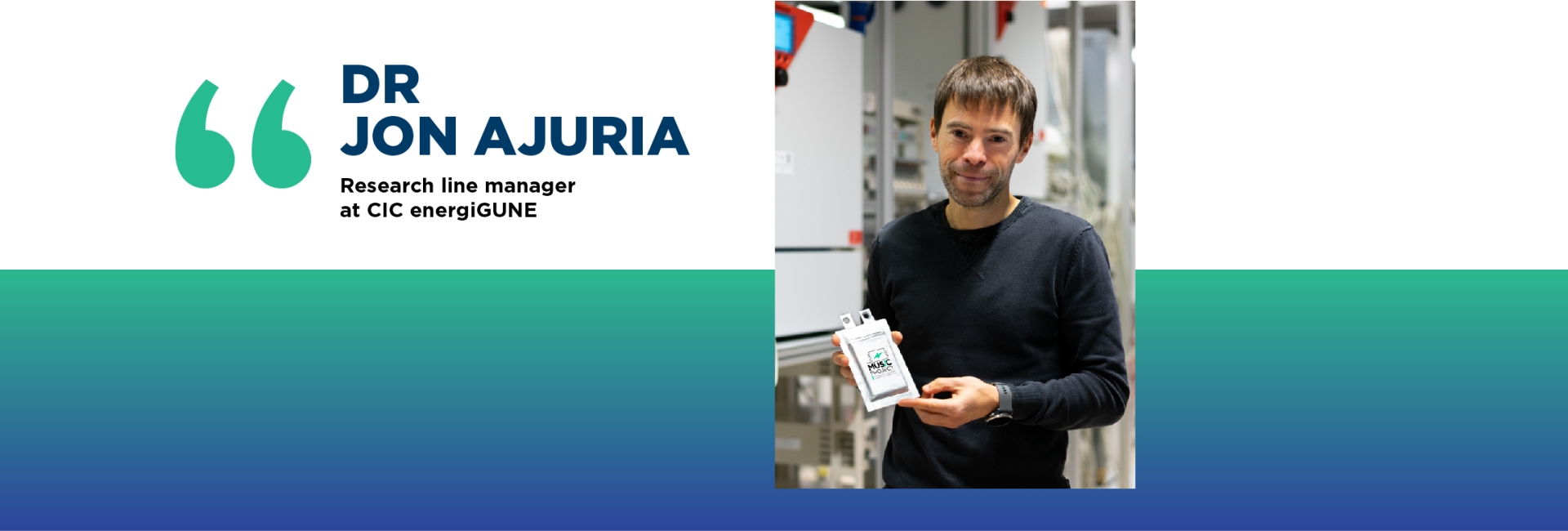
"It is expected to develop a minimum viable product that represents a technology maturity that corresponds with TRL6"
As we delve into the insights of Dr. Jon Ajuria, Principal Investigator of the project and Research Line Manager of the Metal-ion Capacitors division at CIC energiGUNE, we gain valuable perspectives on the project´s trajectory and its implications for the future of energy storage.

As the coordinating force behind The MUSIC Project, CIC energiGUNE assumes a pivotal role in steering the trajectory of sodium-ion capacitor technology. Tasked with an array of responsibilities spanning materials development, prototyping, and recycling initiatives, the project epitomizes a holistic approach to innovation. Through collaborative endeavors, The MUSIC Project endeavors to not only advance technological frontiers but also foster a paradigm shift towards sustainable energy practices.
With Dr. Jon Ajuria, Principal Investigator of the project and Research Line Manager of the Metal-ion Capacitors division at CIC energiGUNE, as our guide, we delve into the core of The MUSIC Project´s aspirations and the implications it holds for the future of energy storage.
-
What MUSIC acronym stands for?
Music stands for “Materials for Sustainable Sodium ion capacitors”. By definition, sustainability refers to the ability of maintaining a process over the time. Better understood by the society with the definition given by the UN in 1987, “meeting the needs of the present without compromising the ability of future generations to meet their own needs”. Sustainability is composed of three interdependent pillars requiring a balance among them, which are the environmental, the social, and the economic.
At this initial stage, where we are developing a novel technology that is not available in the market, we are committed to setting the basis for the development of a sustainable technology. MUSIC project partners cover the whole value chain of the sodium ion capacitor technology, from the design of materials to fabrication of prototypes and their integration in battery packs. We are searching for novel noncritical raw materials and fabrication processes that are more respectful with the environment. In this sense, MUSIC aims to support Europe on the transition towards a climate neutral continent, by reducing vulnerabilities in the entire EU raw materials value chain by developing a technology that avoids the use of critical raw materials and which is sustainable by design.
-
Is MUSIC technology expected to reach the market?
Definitively a 4 year period is too short for a successful market introduction of an innovative technology due to its technical complexity. However in our explotation roadmap a preliminary business plan incorporating a macro and micro environmental analysis is foreseen to identify opportunities and threats to complement a SWOT analysis identifying internal strengths/weakness that provide the key conditions towards achieving the full impact of the technology and a future SIC industrial value chain. Finally, during the project, it is expected to develop a minimum viable product (MVP) that represents a technology maturity that corresponds with TRL6. It will consist of a SIC prototype module with an integrated innovative supercapacitor management system (i-SMS) and will be tested and validated for future scale-up.
Dr. Jon Ajuria´s elucidation on the intricacies of The MUSIC Project underscores its commitment to innovation and sustainability. Through collaborative efforts encompassing research, development, and prototyping, the project aims to pave the way for a more sustainable energy landscape.
As we navigate the complexities of technological advancement, The MUSIC Project stands as a beacon of progress, driving towards a future where energy storage solutions are not only efficient but also environmentally conscious. With CIC energiGUNE at the helm, the journey towards sustainable energy storage reaches new heights, promising a brighter and greener tomorrow.